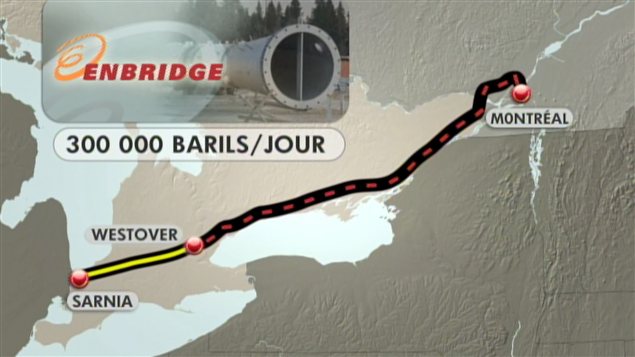The failure of Canadian oil and gas producers to get world prices for their product costs the country $28-billion a year, according to the last budget, reducing federal government revenues by $4-billion. No wonder Ottawa has been so keen to push projects that would help get natural resources to Asian and European markets.
Part of the solution is to build new pipelines, but the news on that front has been decidedly mixed. The Northern Gateway pipeline to Kitimat, B.C., looks as dead as a Norwegian blue parrot. The regulatory process is still ongoing, but negative public sentiment in B.C. makes it look a long shot.
The Keystone pipeline between Alberta and the Gulf Coast hangs in the balance, at the mercy of Barack Obama’s new climate change action plan. The President said Tuesday the project will only be given the go-ahead if it does not “significantly exacerbate” carbon pollution. Quite what that means remains a riddle, wrapped in a mystery, inside an enigma. Like Churchill’s famous quote about Russia, the key to that riddle may be America’s national interest. The Harper government argues this would be best served by North American energy security, where Canadian crude replaces equally high carbon imports from Venezuela and Nigeria. It’s not yet clear whether the President is convinced.
Such is the uncertain future of both projects that great store has been placed in nascent plans by both Enbridge and Trans Canada Corp. to transport crude eastward to refineries in Quebec and New Brunswick, from where it could be exported. (Enbridge is proposing to reverse an existing oil pipeline between Sarnia and Montreal. Line 9A from Sarnia to Westover, near Hamilton, has been granted regulatory approval; public hearings on Line 9B to Montreal will begin this fall. Trans Canada is proposing to convert existing natural gas pipelines for oil transportation between Alberta and tank terminals in Quebec City and Saint John, N.B.).
Politicians of all stripes have shown unusual solidarity in support of moving oilsands crude eastward. The good news for the pipeline companies is that there has not been concerted opposition from environmental and native groups to their proposals – until now.
Last Thursday, a group of environmental protestors took over a pumping station north of Hamilton. The action, dubbed Swamp Line 9, was aimed at blocking plans by Enbridge to reverse Line 9’s flow pipeline, which would allow it to eventually pump up to 300,000 barrels of diluted bitumen from the oilsands.
Early Wednesday, police raided the Enbridge pumping station and arrested 20 people.
But that is unlikely to be the end of the matter. The protest was supported by numerous environmental groups, Idle No More and the Occupy movement. This is the activist equivalent of a camel – the veritable horse designed by committee. Each group has its own agenda – the environmental NGOs want to make Energy East a proxy war for the oilsands and bottleneck production on the Prairies; Idle No More threatens more non-violent protests as part of its Sovereignty Summer, unless Ottawa recognizes the rights of native groups to say no to development on their traditional lands (among other demands); while Occupy calls for a “total restructuring of the political and economic system” no less.
Line 9 has been carrying conventional crude from east to west for 20 years without incident, but this protest has been sparked by claims that diluted bitumen from the oilsands is more acidic and corrosive, and thus more likely to spill
With uncanny timing, the protest culminated just as the U.S. National Research Council released its findings on the transportation of diluted bitumen, concluding that claims by such groups as Friends of the Earth are false. “Diluted bitumen has no greater likelihood of accidental pipeline release than other crude,” the report said.
However, as native environmental activist Clayton Thomas Muller pointed out, Enbridge’s track record on leaks has done the protesters a big favour. It was an Enbridge pipeline that spilled 3.3 million litres of oil in Michigan and the company reported another leak in northern Alberta last weekend.
“Their narrative is unraveling with every spill,” he said.
The Sovereignty Summer is still in its infancy – rallies in sympathy with the Swamp Line 9 protest across the country were sparsely attended Tuesday. But if unrest becomes more coordinated, this could be the start of a long, hot summer.
Line 9 runs through the traditional lands of the Six Nations of the Grand River in southwestern Ontario. As the Six Nations proved in the Caledonia land dispute, they are a far bigger impediment to development they consider unwelcome than a rag-tag band of environmentalists.
While the sea may refuse no river, the quest for Canadian crude to reach tidewater is proving a good deal more problematic.
Occupy and Idle No More could team up to block pipelines going east


























Laissez un commentaire Votre adresse courriel ne sera pas publiée.
Veuillez vous connecter afin de laisser un commentaire.
Aucun commentaire trouvé